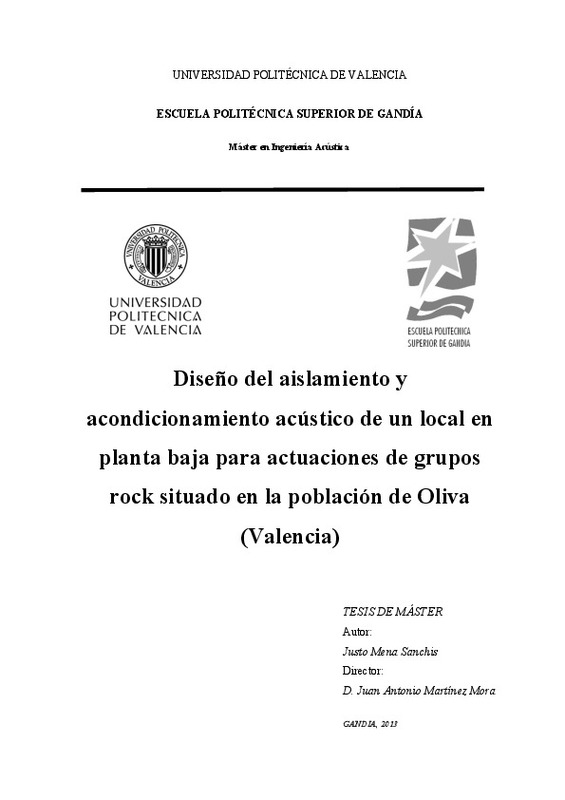|
Resumen:
|
The acoustic insulation refers to the set of actions aimed at obtaining a correct attenuation in the
transmission of airborne noise, vibration and impact between the different spaces that integrate a building,
and also ...[+]
The acoustic insulation refers to the set of actions aimed at obtaining a correct attenuation in the
transmission of airborne noise, vibration and impact between the different spaces that integrate a building,
and also with the exterior of the building. The acoustic insulation needs to be addressed in the design phase
and construction of the building because once built any significant improvement in it will be much more
complicated and more expensive. Another important aspect in the room acoustics will be the conditioning
acoustic that deals with the definition of the forms and wall coverings, ceilings, and floors inside an
enclosure in order to get the acoustic conditions more suitable for the type of activity that is intended for your
use.
In this final work of Master is carried out a project of insulation and conditioning from a building on the
ground floor of 180 m² for performances of groups live rock. On the basis of the constructive characteristics
of the initial building and with the help of the software AISLA V. 3.0 has been designed acoustic insulation
required of the enclosure, defining in detail each acoustical solution adopted to comply the applicable
legislation and standards. Similarly, in response to the acoustic parameters of quality desired for the type of
proceedings which are to be performed on campus, the acoustic conditioning has been simulated with the
help of the software Catt Acoustic by defining the geometric shape of its coatings, as well as detailing the
material from which they are manufactured.
[-]
El aislamiento acústico se refiere al conjunto de acciones encaminadas a la obtención de una correcta atenuación en la transmisión de ruido aéreo, impacto y vibraciones entre los diferentes espacios que integran un recinto ...[+]
El aislamiento acústico se refiere al conjunto de acciones encaminadas a la obtención de una correcta atenuación en la transmisión de ruido aéreo, impacto y vibraciones entre los diferentes espacios que integran un recinto y también con el exterior. El aislamiento acústico hay que abordarlo en la fase de diseño y construcción del edificio pues una vez construido cualquier mejora significativa en el mismo será mucho más complicada y más cara. Otro aspecto importante en la Acústica de la Edificación será el acondicionamiento acústico que trata con la definición de las formas y revestimiento de las paredes, techos y suelos interiores de un recinto con objeto de conseguir las condiciones acústicas más adecuadas para el tipo de actividad a la que esté destinada su uso. En este Trabajo final de Máster se lleva a cabo un proyecto de aislamiento y acondicionamiento partiendo de un local en planta baja de 180 m2 para actuaciones de grupos rock en directo. A partir de las características constructivas iniciales del local y con la ayuda del programa Aisla V.3.0 se ha diseñado el aislamiento acústico necesario del local, definiendo detalladamente cada solución acústica adoptada de forma que cumplan la legislación y normas exigibles. Del mismo modo, atendiendo a los parámetros de calidad acústica deseados para el tipo de actuaciones que se van a realizar en el recinto, el acondicionamiento acústico se ha simulado con la ayuda del programa Catt Acoustic definiendo la forma geométrica de sus revestimientos, así como detallando el material del que están fabricados.
[-]
|





![[File]](/themes/UPV/images/mime.png)


